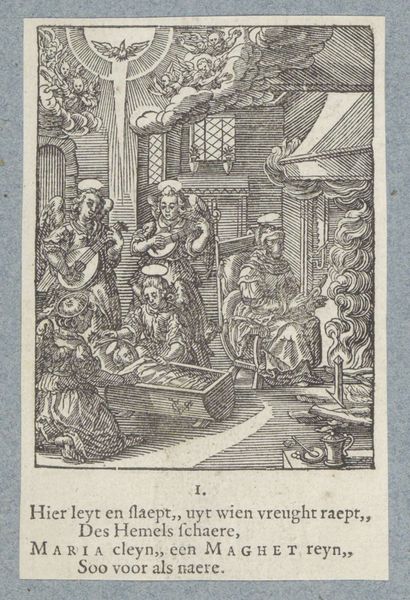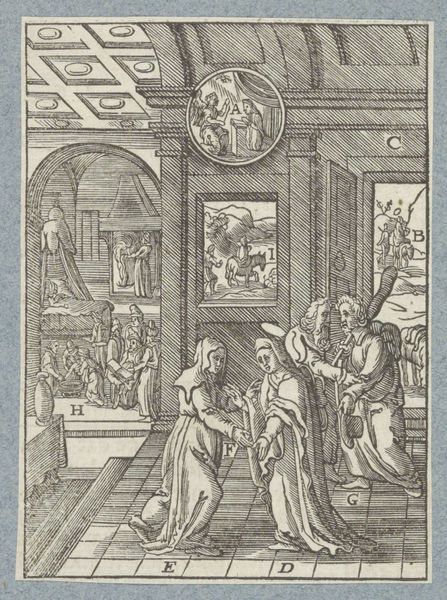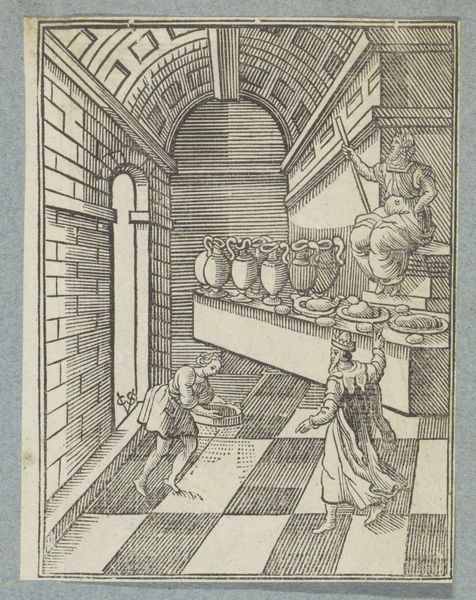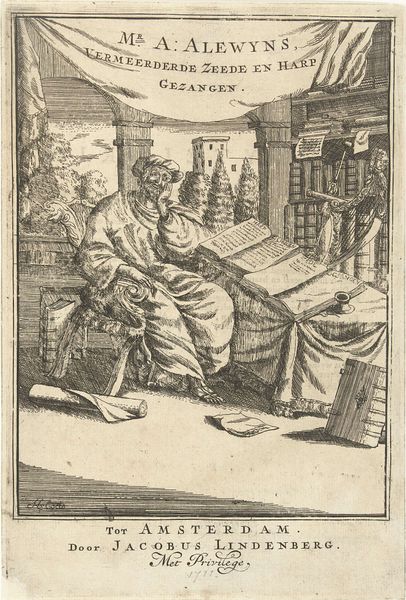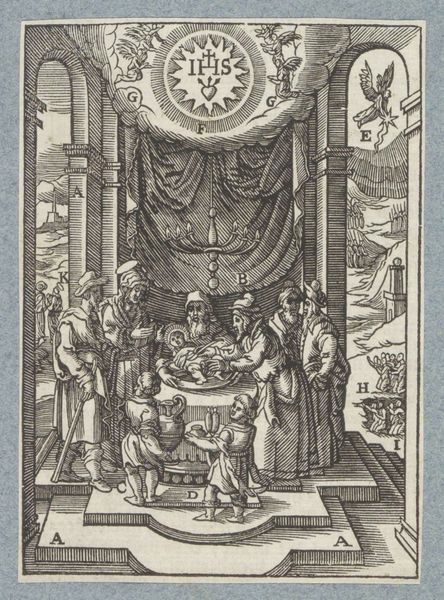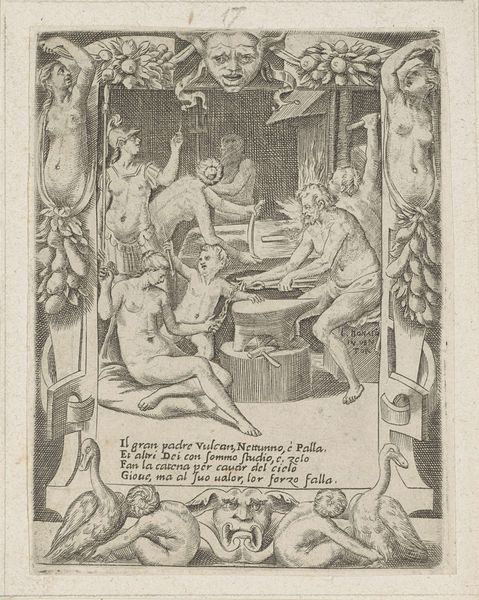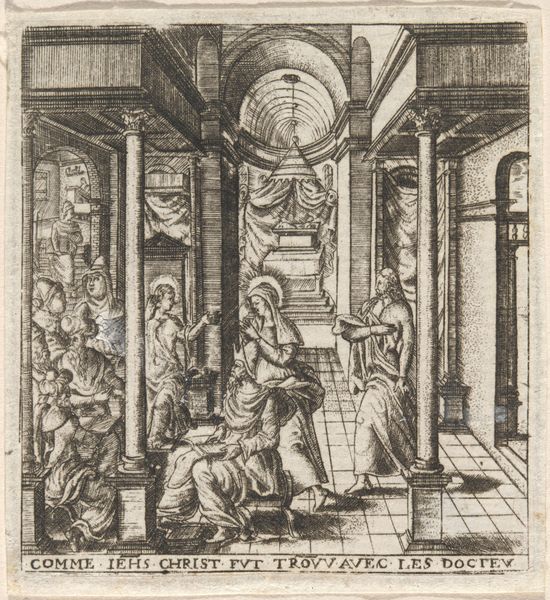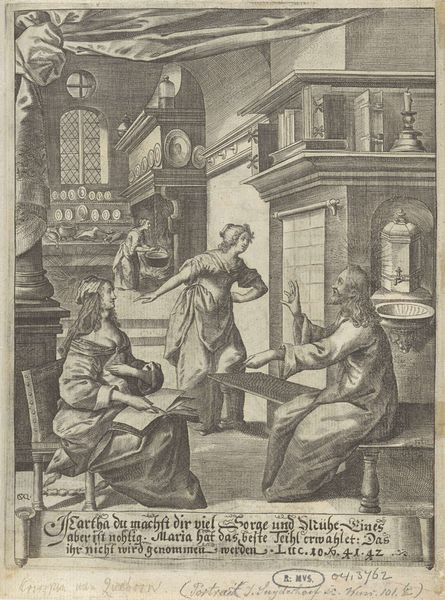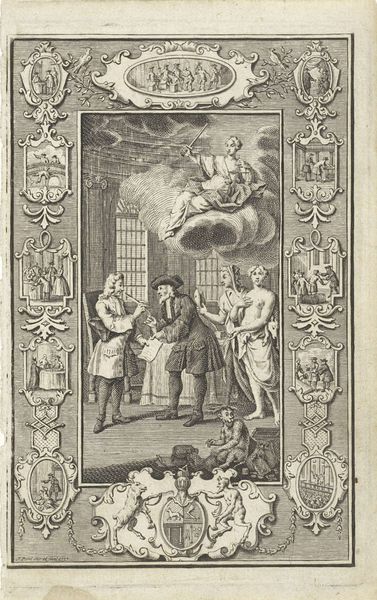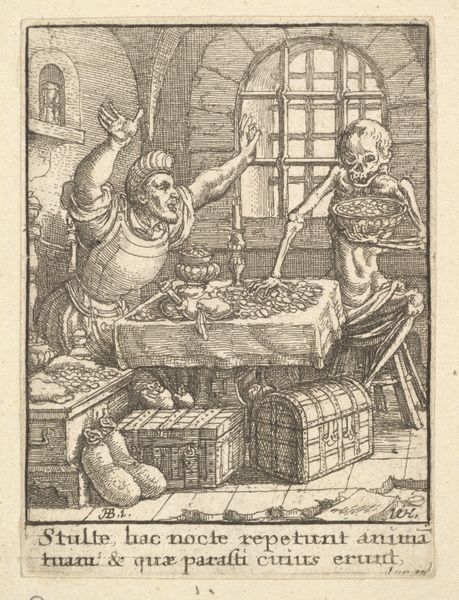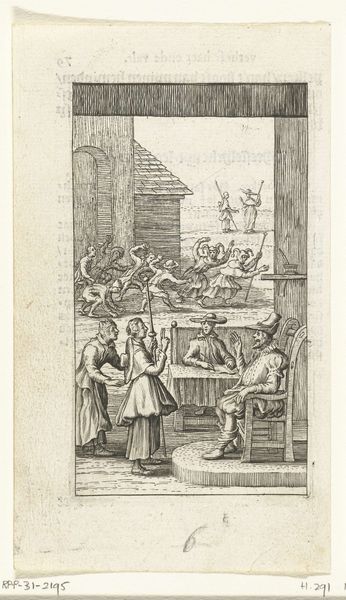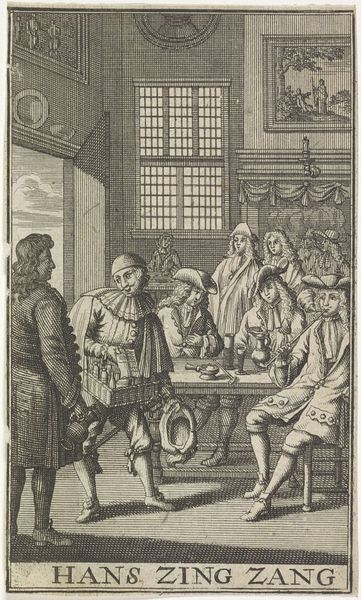
print, engraving
#
portrait
#
baroque
# print
#
genre-painting
#
history-painting
#
engraving
Dimensions: height 140 mm, width 91 mm
Copyright: Rijks Museum: Open Domain
Editor: Here we have "Three Kitchen Maids at Work," an engraving created by F.J. Walther in 1746. I’m struck by the amount of detail Walther manages to capture, and the composition is very linear, drawing my eye toward the central fireplace. What do you see when you look at this print? Curator: Observe the structured layout—the vertical lines of the tiled wall juxtaposed against the curved forms of the figures. Note also the clear spatial organization with distinct foreground, middle ground and background planes, achieved through careful engraving techniques that imply depth despite the essentially flat picture plane. How do you perceive the balance of forms within the composition? Editor: I see what you mean. The lines certainly create a rigid feeling. I notice the contrast between the rectangular window and the very organic flames in the middle of the room, the balance makes everything feel self-contained. What is the effect of that formal containment, do you think? Curator: Precisely. Walther's decision to restrict the tonal range accentuates shapes and patterns—furthering the flattening effect of the engraving process. This invites closer examination of textural elements like the weave of fabrics and shine on surfaces. This invites consideration of semiotic relations - for example, does the texture signify socio-economic context in any meaningful way? Editor: Now that you point it out, it is amazing how he creates these subtle contrasts and subtle depth with so few shades. It almost feels modern, with that flattened perspective. Curator: The reduction to essential elements compels us to appreciate line quality, arrangement, and graphic effect above all else. It demonstrates how formal choices profoundly shape interpretation. Ultimately it may offer some lessons in paring down images and prioritizing clear construction, to produce meaning and communicate value. Editor: I agree; it has revealed to me just how much can be achieved with basic form. The lack of colour definitely pushes us to view the space more closely and analyze everything critically. Thanks for illuminating those aspects!
Comments
No comments
Be the first to comment and join the conversation on the ultimate creative platform.

